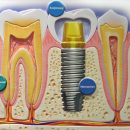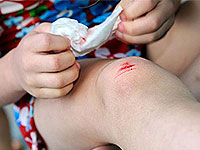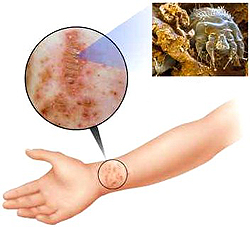Properties and dosage
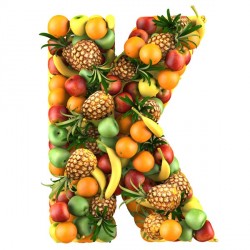
If it were not for vitamin K, the wounds on human skin did not heal, and small abrasions turned into severe blood loss. Thanks to perennial and thorough research, scientists were able to prove key vitamin K:
- stops bleeding;
- contains amino acids that are formed in liver cells;
- contributes to the best absorption of calcium;
- has a neutralizing effect;
- improves the process of exchanging protein compounds in the heart and lungs;
- Due to the ability to synthesize the protein Fillaxinone provides the energy of all cells.
The human body receives vitamin to food, in small quantities, it accumulates in the liver, and under the influence of sunlight and high temperatures can be destructed. In turn, the absorption of vitamin, which falls towards us with food, contributes to the normal operation of such organs as the liver and gallbladder.
Natural vitamin K and synthetic (K3), formed as a result of laboratory experiments, do not differ in their activity from each other.
It should be noted that two types are most common from the whole group of vitamins today: K1 or Fillaxinone and K2, otherwise called Menahana. Synthesis K1 occurs in plants leaves, K2 - in human and animal organism.
With excessive accumulation of vitamin in the liver, intoxication may occur, as a result of which the cells of a healthy organ, red blood cells and a brain are damaged. However, such a picture is rather an exception to the rules than pattern.
A certain dose of vitamin K, the necessary person for daily use, has not yet been established. The approximate amount can be calculated, based on the proportion: 1 μg of vitamin per 1 kg of body weight. For example, if a person weighs 70 kg, then every 24 hours its body will need 70 μg of vitamin K. With food, as a rule, comes a little more, but no symptoms of overdose occurs.
Daily need for this vitamin:
- Children from 1 to 10 years - 70 μg;
- Teens - 80 μg;
- women - 80 μg;
- Men - 90 μg;
- Pregnant women - 120 μg;
- during lactation - 120 μg;
- People actively engaged in sports - 140 μg.
Operating principle

Often, such processes in the body contribute to this:
- The formation of stones in the bustling bubble, liver disease, jaundice;
- Colty, Target disorders, changing the functions of the pancreas;
- Long reception Antibiotics, disturbing the normal microflora of the gastrointestinal tract;
- intravenous meals;
- Treatment with chemical drugs.
Signs of lack of vitamin K:
- continuous bleeding due to any, even the smallest damage;
- bleeding gums;
- sharp decrease in hemoglobin levels;
- long and painful menstruation;
- violation of the digestion system;
- fatigue and weakness.
The lack of Phillaquinone occurs primarily with the unstable work of the liver, intestinal diseases, or as a result of surgical intervention. In addition, depending on the type of heat treatment, some foods contained in them can collapse. The presence of preservatives in food also disrupts the digestibility of the useful component.
Cases of overdose by this vitamin practically does not happen, but large doses may be accompanied by side effects. Intravenous administration of vitamin K sometimes causes such symptoms as:
- jaundice;
- allergic shock;
- Blood becomes more viscous;
- thrombophlebit;
- migraine;
- level up cholesterol;
- excessive sweating and redness of the skin of the face;
- Problems in the intrauterine development of the fetus during pregnancy.
Vitamin products
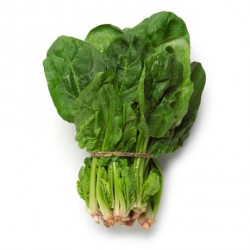
Phillahinone contains all green plants: leaf vegetables, cabbage. Also soy and olive oil, walnuts, milk, fish fat and eggs.
Since today few of the livestock breeders can provide their pets a diet rich in vitamin K, then we can say that in the meat of this component it contains insignificantly small. And the least - in fruit and root.
Here is a list of products with the highest content of vitamin K:
- cabbage and spinach - from 350 to 500 μg;
- Broccoli, Pink Cabbage, Valerian, Cress Salad - from 200 to 230 μg;
- Cochan salad - 120 μg;
- Cauliflower, beans, cucumbers - from 30 to 80 μg;
- Tomatoes, chicken eggs and meat - from 10 to 20 μg;
- veal, pork, lamb - 140 μg;
- Pork liver - up to 600 μg.
In order to prevent the appearance of a vitamin K deficiency, especially when there is a danger of formation of blood loss, doctors recommend taking small doses of K2 daily.
In particular, before preparing for the operation, with abundant menstrual bleeding, with osteoporosis and fragility of bones. In these cases, vitamin K can be particularly useful, that is why it is often included in many drugs that contribute to the formation of bones, as it may aggravate the condition of thrombosis.
The danger is that people prone to the formation of thromboms are categorically not recommended to take pharmacy vitamins of synthetic origin.
Interaction with different substances
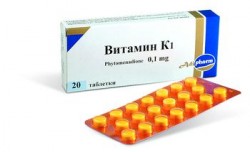
Vitamin K is not aggressive and does not interfere with the absorption of different substances. It is perfectly compatible with products such as kefir, yogurt, fishery.
But its absorption is directly influenced by:
- Vitamin E in large quantities;
- various sleeping pills;
- antibiotics;
- alcohol substances;
- various carbonated drinks;
- Food with a high content of preservatives;
- Unnatural flavors;
- Synthetic dyes in food.
If your problem is reduced blood clotting, then our site recommends first of all to revise your daily diet. It is possible that there is food in it, the oppressive action of Phillaxinone.
Vitamin K is one of those components that we just need to receive with food, because the human body is not able to produce it independently.
Observing the rules of a healthy lifestyle and balanced nutrition, you can protect yourself from problems associated with a shortage of such an incredibly useful component as vitamin.

